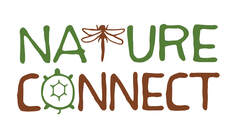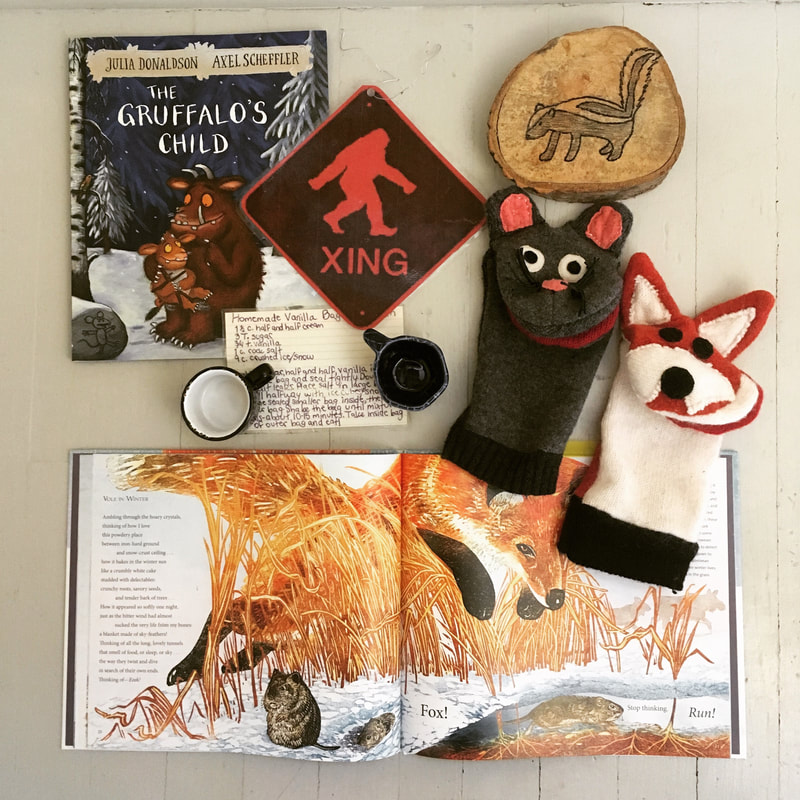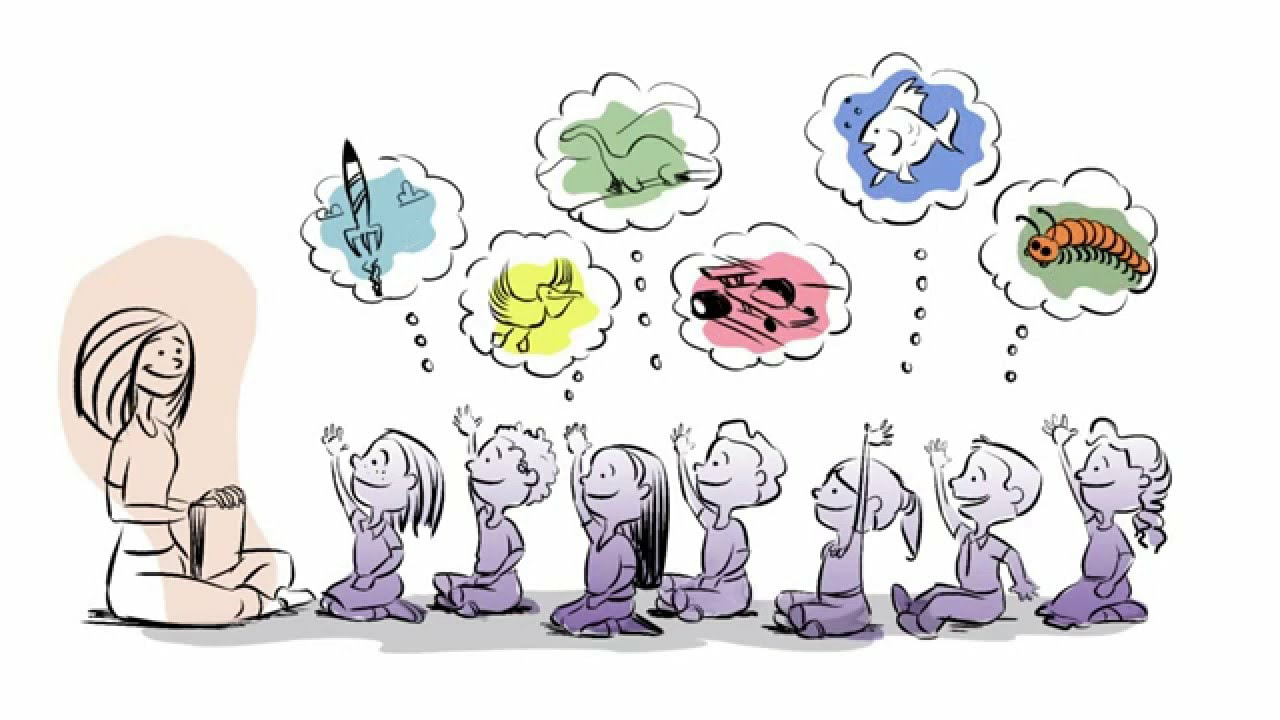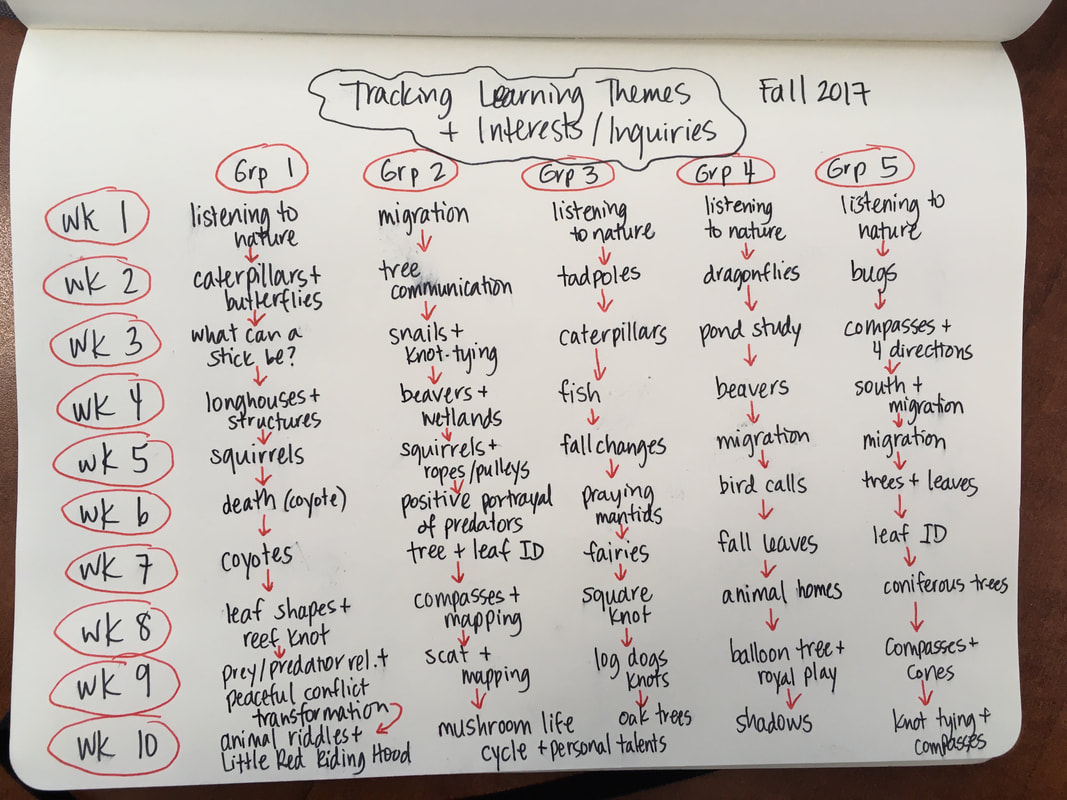|
It began with a question: how do you do emergent curriculum in a forest school setting with school aged children? Our programs serve children ages 3-12, but we take basically the same approach, no matter the age group. We often start the season with a topic or idea that the facilitator finds interesting. Then during play, hikes, downtime, flow time, we as facilitators observe. We listen, we watch, we act as funnels. We are open to what the group needs - what the individuals need. We take it all in, and we let it percolate. We mine for questions. I believe that listening is one of our biggest tasks as forest school facilitators. The display in the photo below is a representation of the "emergent curriculum" in our last week of winter forest school (last week). How did all of this come about? The poem of a meadow vole, at the bottom of the picture, emerged from a week when we were looking for golden rod galls on a meadow hill, and instead found about 10 meadow voles, scurrying to escape through half-melted snow tunnels. The kids squealed, we imagined we were foxes, and we gently caught one! It was amazing to see the little vole, who they compared to a hamster and said was "SOOOOOOOOO cute!!!" This was an experience that none of us - including the facilitators - had ever had before - an unforgettable experience of connecting to creatures most of the children had never even heard of before. This launched a study into meadow voles - what they eat, what eats them, how they survive and breed and eat all year long and how they're known as the "hamburgers of the prairies" because of the many predators that rely on them for food. They eat their own body weight in food each day! They make amazing tunnels in the snow! Their females can have up to 80 or so babies in one year if they stay hidden from predators! Amazing little creatures. Also cute. We used the meadow vole and fox puppets, handmade by a wonderful East Coast woman who happens to be mom of one of our facilitators, to sing songs about meadow voles and foxes, and tell stories too. This group loves to make up their own stories, with a tarp or shower curtain strung up in the forest to serve as their puppet theatre. The skunk drawing on a tree cookie was for two groups who smelled a skunk - and saw skunk tracks - by a coyote den. This led to lots of wondering about skunks, and learning about their great horned owl predator who can't smell worth anything, and learning about their February nighttime forages for love - mating season. They can cover up to 8 km in one night, just looking for a mate! We used this tree cookie in a storytelling circle to create a story together about Sketchy the Skunk. It was silly, and of course, involved some stinky parts. It also included some information about prey/predator relationships that we had learned about previous to the circle. All of our groups enjoyed tracking, and several times "big foot" was mentioned - sometimes when it was snowy and blizzardy, when one group member said "I think I see a yeti." One time during a sit spot when another member said, "I saw a yeti during my sit spot." Another time, our snowshoe marks looked a little like Big Foot's tracks. We dove deep into this imaginative side by putting large tracks in the snow, and following them to little red Big Foot Crossing signs. We read Larf by Ashley Spires, and The Gruffalo's Child by Julia Donaldson. As well, all of our groups enjoyed playing with snow + ice cream scoops + coloured water in spray bottles + small cups and bowls to make their own ice cream shops - a hot commodity in the cold weather. So as a treat, we made Homemade Ice Cream using snow and shake-shake-shaking it in ziploc bags, and eating it in small cups at the end of our time together. In the winter, we only need a little! (Although some would have loved more!) What is the role of the educator in this type of emergent curriculum process? There are several images that come to mind:
There are weeks when it feels a bit like the drawing above - where there are 12 different interests to pursue in a group of 12 children. That's where the funnel facilitator, who has collected the questions and interests and interactions, turns into a sieve. We distill, discern, and try to listen for direction that's rising to the top in this group. Like Carol Ann Wien writes, in her book Emergent curriculum in the primary classroom (2008), "as teachers we are co-learners with the children, investigating how they learn." (p. 79) I guarantee you that in one group, we could talk about dinosaurs each week because we have two avid dinosaur lovers. They know more than I will ever know about those creatures, and so they teach me! Sometimes those dinosaur themes are woven into our time through discussion around herbivores/carnivores, or about which creatures/plants have adapted and changed over many years, and which haven't, or in songs or stories, or in their imaginative play. In another group, dragons come up a lot. The dragons interact with hawks and eagles and chickadees, and sometimes build nests and sometimes destroy them. One week we made up a story of migrating dragons to get at both an interest in migration and local birds, and an interest in dragons. Weaving various strands together to co-create engaging experiences. In Wien's words, we can "enter a new relationship with children, based on reciprocity." (p. 108). Part of the fun and challenge of this type of educating means being open, flexible, and willing to learn from each other - adults and children alike. It's about developing relationships and trusting each other - then hopping on for the ride! We throw ingredients into the pot of our outdoor classroom, and wait and watch the alchemy that happens. In our facilitation role, we document through photos, videos, scrawls in our notebooks, and thoughts we gather and record as co-leaders at the end of every session. We record observations each week that lead to our curriculum development for the following week(s). We plan with intention to the details of our group. We see the curriculum that unfolds, but in a sort of backwards way - we don't make a plan for the season. We see where the season leads. What does it look like, practically, in terms of topics that are explored? Below is a chart that shows 5 different groups in one of our fall sessions (10 weeks). You can see the multiplicity of directions - that even on the same land, and with similar facilitators, many paths emerge. For me, this is the exciting thing about emergent curriculum - it continues to surprise and unfold, and is never ever dull. We are open to see the small miracles around us. Looking for light/learning/growth, and nudging each other forward and together.
0 Comments
|
Read on...Hammers, Huge Swings, and the Freedom to Play Archives
April 2020
|
We are honoured to walk, learn, and play on the traditional territories of the Haudenosaunee, Anishinaabeg, and Chonnonton Nations, treaty lands of the Haudenosaunee. Grateful for the ongoing care, stewardship, and teachings from Indigenous Peoples that help us walk gently on this earth. We are committed to the ongoing process of decolonization through partnering with local Indigenous educators in our facilitation, learning about the past and about good ways to move forward together, respecting the land as our First Teacher.

Join our email update list
© Nature Connect 2024
© Nature Connect 2024




 RSS Feed
RSS Feed